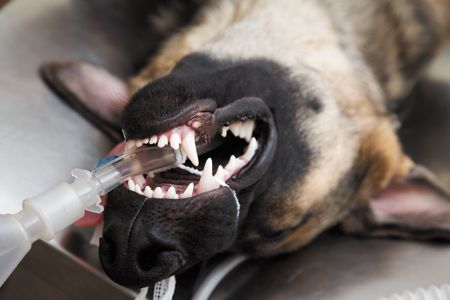Learn to cope with anesthetic loss
The death of a veterinary patient can lead to guilt, grief and even secondary trauma. Fetch dvm360 conference speakers Tasha McNerney and Dr. Hilal Dogan offer support to reduce the clinical risks and manage the repercussions when a patient dies under anesthesia.

shutterstock.com“If you've never had an anesthetic loss, you're not doing enough anesthesia.” It's a chilling statement, one Tasha McNerney, CVT, CVPP, VTS (anesthesia and analgesia), heard from a mentor early in her career. At the time she said she was taken aback by the idea, but after 15 years in the profession-and hearing countless technicians share stories of how they lost a patient and now fear anesthesia-she's on a mission to help team members accept loss and embrace anesthesia again.
In a special joint session with Hilal Dogan, BVSc, CCTP, “Coping with anesthetic loss,” at Fetch dvm360 conference, McNerney shared some startling statistics about anesthetic deaths in pets. According to research published in the journal Anesthesia and Analgesia, “cumulative incidences of anaesthetic and sedation-related death were reported to be 0.17% in dogs and 0.24% in cats” versus 0.01% to 0.02% in people.1
To reduce the risks of anesthetic loss, McNerney says it's critical to ask these questions before anesthesia:
• What monitors do you have available?
• Who is monitoring the pet under anesthesia?
• Do you feel comfortable communicating with your doctors when you see a problem?
McNerney says it's also important to know the patient's ASA status-American Society of Anesthesiologists (ASA) Physical Status Scale-before drugs are on board.
McNerney says kitties have more complications than dogs-about twice as frequently-and most occur during the post-operative period.
Before you anesthetize any pet, McNerney says you need to explain the type of anesthesia being used-whether it's sedation or general anesthesia-and the risks associated with anesthesia. It's also important to require pet owners to sign a release form.
The two riskiest times for anesthetic loss occur during induction and recovery, McNerney says, when the patient is less likely to be connected to monitoring.
Any chance your practice still uses mask or tanking induction? McNerney's suggestion: Unplug your unit, take it to the roof of your practice and chuck it off. This equipment, she says, increases the potential for problems.
One of your best tools during anesthesia? Your team. “Never be left alone to induce or recover a patient,” McNerney says.
With this grounding in prevention, it's time to talk about what happens when the worst happens: a patient dies. Dr. Dogan, a Certified Clinical Trauma Professional (CCTP), says it's important to understand secondary trauma. Simply put, it's the trauma that you observe and take on yourself. It was first identified in nurses, emergency responders, therapists and other healing professions, and Dr. Dogan says we're now beginning to recognize that veterinary professionals are at-risk for secondary trauma as well.
Mirror neurons in our brain fire to reflect the actions or feelings of others, Dr. Dogan explains. “When we observe others, neurons fire in patterns that would fire if we were doing the action or having the feelings ourselves.”
What is means for veterinary professionals: Witnessing death-and the pet owner's grief response-have the potential to create trauma that carries lasting effects.
Trauma can change your brain, specifically in the cerebral cortex, hippocampus and corpus callosum, Dr. Dogan explains, which can result in poor judgment, compromised memory and a shift in how the person pays attention and behaves.
Signs of unresolved trauma include:
• hypervigilance
• fear
• avoidant behavior
• chronic exhaustion
• guilt
• sleeplessness
• anger and cynicism
• physical ailments
The first steps to addressing this type of vicarious trauma are to be self-aware of your risk and to be brave to confront it, Dr. Dogan says. “Different strategies work for different people, so be open to trying different things.”
The good news, Dr. Dogan says, is that you can heal with an action-oriented approach to build resilience. The brain's neuroplasticity means you can form new patterns and weaken old habits-essentially rewiring the brain. She recommends these tools:
• Set personal goals.
• Work on boosting your internal locus of control.
• Seek activities to boost your self-esteem and self-efficiency.
• Develop your ability to adapt to pain.
Losing a patient under anesthesia can be a devastating experience for veterinary professionals. But recovery is possible, Dr. Dogan says, when you build your self-awareness, focus on a balance of self-care and work and connect with peers to avoid a sense of isolation.
1. Bille C, Auvigne V et al. Risk of anaesthetic mortality in dogs and cats: an observational cohort study of 3546 cases. Vet Anaesth Analg. 2012 Jan;39(1):59-68.

You. Can. Do. This!
At Fetch dvm360 conference, we're the support system you need. With every conference this year, we intend to nurture your mind (meaning quality CE for days) while also encouraging you to take stock of your physical and emotional health. Register now.